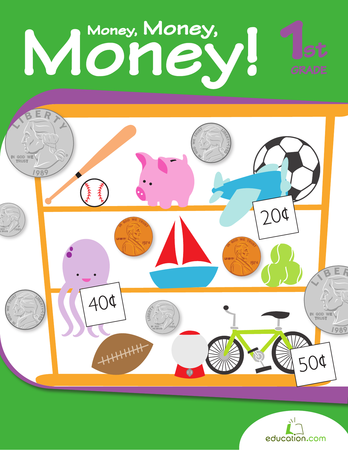Science project
Detecting Counterfeit Money
Difficulty
Easy
Cost
Minimal
Safety Issues
None.
Material Availability
All materials readily available.
Project Time Frame
4-6 weeks
Objective
This project tests the usefulness of counterfeit-detection pens.
The goals of this project are:
- To test various counterfeit detection pens on the market.
- To encourage the development of improved counterfeit detection methods.
Materials and Equipment
Computer with Internet access
- Color printer
- Digital camera
- Typical office/hobby/hardware/craft supplies (paper, poster board, glue, wood, etc.)
- Several different types of counterfeit detection pens.
- Fresh paper money from the bank (singles, twenties and hundreds if possible).
All materials can be found in your home, at local stores, or on ebay.
Introduction
It happens to everyone eventually. We innocently hand the cashier a fifty dollar bill, only to have her run a pen across the front of it and flippantly announce that it's counterfeit. In reality, it's very difficult to make counterfeit bills look real. And there are many complaints from consumers that these pens they use at stores don't actually work. Yet, business continue this odd practice, seemingly unhindered by the criticism. In this project we will test the efficacy of these pens, and try to determine how they work, or how they don't.
Research Questions
- What is the supposed mechanism that makes counterfeit detection pens work?
- How can counterfeit detection methods be improved upon?
Terms and Concepts to Start Background Research
- Counterfeit
- Paper Currency
Experimental Procedure
- Read overview of relevant topics (see bibliography below and terms listed above)
- Address all of the above terms and research questions.
- Take your own photographs throughout the course of the experiment.
- Wash your hands.
- Gather several different counterfeit detection pens.
- Lay out about 20 crisp, new bills from the bank.
- Draw a mark on each bill with each pen. Keep track of which pen made each mark.
- Make your own counterfeit money, and test the pens on your homemade bills.
- Carefully record all observations.
- Analyze your data.
- Interpret your findings in a detailed report.
- Include interesting photos, charts and diagrams in your science fair display.
- Offer demonstrations using the money in people's pockets.
Bibliography
- http://en.wikipedia.org/wiki/Counterfeit (Wiki topic #1)
- http://en.wikipedia.org/wiki/Counterfeit_banknote_detection_pen (Wiki topic #2)
- http://calladus.blogspot.com/2006/09/testing-counterfeit-money-detector-pen.html (About the counterfeit money detection pen)
- http://www.alibaba.com/showroom/Counterfeit_Detector_Manufacturers.html (Currently available counterfeit detection products)
- Internet searches of your choosing. Search words or terms listed here, or make up your own phrases. Click on any results you find interesting. Have fun surfing the net!
Education.com provides the Science Fair Project Ideas for informational purposes only. Education.com does not make any guarantee or representation regarding the Science Fair Project Ideas and is not responsible or liable for any loss or damage, directly or indirectly, caused by your use of such information. By accessing the Science Fair Project Ideas, you waive and renounce any claims against Education.com that arise thereof. In addition, your access to Education.com's website and Science Fair Project Ideas is covered by Education.com's Privacy Policy and site Terms of Use, which include limitations on Education.com's liability.
Warning is hereby given that not all Project Ideas are appropriate for all individuals or in all circumstances. Implementation of any Science Project Idea should be undertaken only in appropriate settings and with appropriate parental or other supervision. Reading and following the safety precautions of all materials used in a project is the sole responsibility of each individual. For further information, consult your state's handbook of Science Safety.













